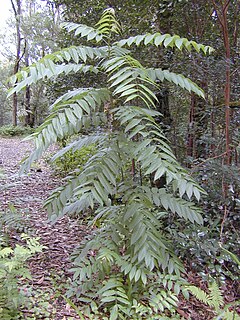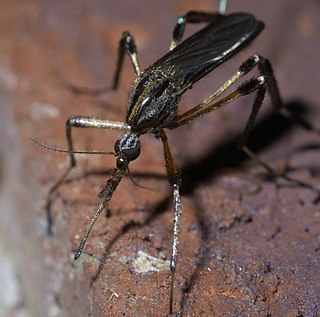
Toona ciliata is a forest tree in the mahogany family which grows throughout southern Asia from Afghanistan to Papua New Guinea and Australia. It is commonly known as the red cedar, toon or toona, Australian red cedar, Burma cedar, Indian cedar, Moulmein cedar or the Queensland red cedar. It is also known as Indian mahogany. Indigenous Australian names include Polai in the Illawarra. Woolia on the Richmond River, Mamin & Mugurpul near Brisbane. And Woota at Wide Bay.

Elsholtzia ciliata, commonly known as Vietnamese balm, xiang ru (香薷) or kinh giới in Vietnamese, is a plant native to Asia.
Cedar wood comes from several different trees known as cedars that grow in different parts of the world, and may have different uses.

Lysimachia ciliata, the fringed loosestrife, is a species of flowering plant in the family Primulaceae. It is an erect, herbaceous perennial growing to 120 cm (47 in) tall and 60 cm (24 in) broad, with opposite, simple leaves, and smooth, green stems. The star-shaped yellow flowers are borne in midsummer. It is native to North America, including most of southern Canada and most of the United States except for the southwest. This plant is notable in that it is one of the few species of Lysimachia to bear elaiosomes, that is, to offer oil instead of nectar as a reward to pollinators.
Ciliata is a genus of lotids, with these currently recognized species:

Pseudosquilla ciliata, the common mantis shrimp, is a species of mantis shrimp, known by common names including rainbow mantis shrimp and false mantis shrimp. It is widespread in the tropical Indo-Pacific region and in both the western and eastern Atlantic Ocean.

Corythucha ciliata, the sycamore lace bug, is a species of lace bug in the family Tingidae that is associated with sycamore trees.

Grindelia ciliata is a species of flowering plant in the daisy family known by the common names Spanish gold, goldenweed, and waxed goldenweed.

Bergenin, alias cuscutin, is trihydroxybenzoic acid glycoside. It is the C-glycoside of 4-O-methyl gallic acid. It possesses an O-demethylated derivative called norbergenin. These are chemical compounds and drugs of Ayurveda, commonly known as Paashaanbhed. It shows a potent immunomodulatory effect.

Acalypha ciliata is a species in the botanical family Euphorbiaceae. It occurs widely in Africa where it is eaten as a vegetable, or fed to animals. In West Africa and East Africa it is used as a medicinal plant.

Populus ciliata, the Himalayan poplar, is a large deciduous tree with tall clean straight trunk and wide rounded crown. The bark of the young trees is smooth greenish-grey and the bark of the old trees is dark brown with vertical cracks. Leaves are broadly ovate with serrulate-crenate and hairy margins. Flowers are drooping raceme catkins appear before or with leaves. Populus ciliata flowers are dioecious, individual flowers are either male or female. Perianth of male flowers is bell-shaped and female flowers are bluntly toothed. Their capsule encloses an average of 100–150 seeds, which are covered by long silky hair.

Blephilia ciliata is an herbaceous perennial of the mint family Lamiaceae native to eastern North America. It is commonly called downy wood mint. Other common names include downy pagoda plant, sunny woodmint and Ohio horsemint.

Coprosma ciliata, is a shrub in the family Rubiaceae that is endemic to New Zealand. C. ciliata is found in the South Island from Lake Brunner southwards into Fiordland mostly west of the Southern Alps. The species prefers lowland forest where it often occurs beside streams, swamps and lakes.

Psorophora ciliata is a species of large mosquito indigenous to the United States east of the continental divide. It is one of thirteen species of the genus that reside in the continental United States. The mosquito has been referred to as the “gallinipper” or “shaggy-legged gallinipper” due to its tendency for aggressive behavior.
Velorini is a tribe of longhorn beetles of the Lamiinae subfamily. It was described by Thomson in 1864.
Tabernaemontana ciliata is a species of plant in the Apocynaceae family. It is found in northern Madagascar.
Velora is a genus of longhorn beetles of the subfamily Lamiinae, containing the following species:
Velora sordida is a species of beetle in the family Cerambycidae, and the type species of its genus. It was described by Francis Polkinghorne Pascoe in 1863. It is known from Australia.

Polydora ciliata is a species of annelid worm in the family Spionidae, commonly known as a bristleworm. It is a burrowing worm and is found in the northeastern Atlantic Ocean and some other parts of the world.

Olearia ciliata, commonly known as the fringed daisy bush, is a small shrub with large clusters of bright purple-blue flowers on a single stem.
















